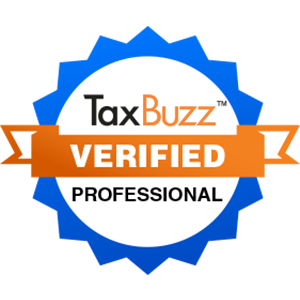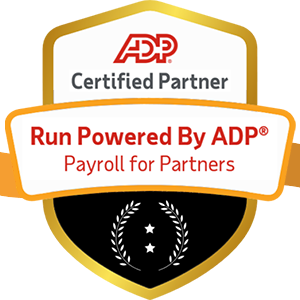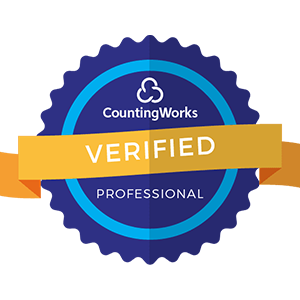
In today's fast-paced business world, efficiency is key. And when it comes to managing your company's most valuable asset—your people—nothing is more crucial than seamless integration between payroll, HR, and accounting systems. But here's the kicker: many businesses are still struggling with disconnected systems, leading to data silos, errors, and wasted time.
Are you ready to revolutionize your Human Capital Management (HCM) strategy? Buckle up, because we're about to dive deep into the world of integrated payroll systems—a game-changer that's transforming how companies handle their finances and human resources.

Picture this: Your HR team is manually entering employee data into one system, your payroll department is crunching numbers in another, and your accounting team is reconciling everything in a third. Sound familiar? If so, you're not alone—but you're also leaving money on the table.
Did you know? According to a study by IDC, companies lose up to 30% of their revenue each year due to inefficiencies. That's a staggering figure that should make every business owner and HCM professional sit up and take notice.
Let's break down the hidden costs of keeping your payroll, HR, and accounting systems separate:
But here's the good news: integrating your payroll with HR and accounting systems can eliminate these pain points and unlock a world of benefits. Ready to learn how? Let's dive in!
Before we get into the nitty-gritty of integration, let's talk about a crucial framework that should guide your efforts: E-A-A-T. No, it's not a new diet trend—it stands for Expertise, Authoritativeness, Accuracy, and Trustworthiness. Here's how it applies to our topic:
Keep this framework in mind as we explore the world of integrated payroll systems. It'll help you make decisions that not only improve efficiency but also enhance your company's reputation and trustworthiness.

Let's break down each component of our integration trifecta and see how they fit together:
Payroll isn't just about cutting checks—it's the pulse of your organization. It touches every employee and has a direct impact on morale, retention, and compliance. When integrated with HR and accounting, payroll becomes a powerhouse of data and efficiency.
Key benefits of integrated payroll:
Your HR system is the keeper of crucial employee data—from hire dates and job titles to performance reviews and career development plans. When connected to payroll and accounting, it creates a comprehensive view of your workforce.
Integration advantages for HR:
Accounting ties everything together, ensuring that your financial records accurately reflect your payroll expenses and HR-related costs. Integration here is key to maintaining financial health and making informed business decisions.
Accounting integration benefits:
Now that we've set the stage, let's explore the transformative benefits of integrating these three crucial systems:
Imagine cutting your payroll processing time in half—or even more. With integrated systems, this isn't just a pipe dream; it's a reality for many businesses.
Thought-provoking stat: Companies with integrated HCM systems report up to 70% reduction in payroll processing time. That's not just saving time; it's freeing up your team to focus on strategic initiatives that drive business growth.
We've all heard the phrase "garbage in, garbage out." When your systems are integrated, you dramatically reduce the risk of data entry errors propagating through your organization.
Mind-bending fact: Integrated systems can reduce payroll errors by up to 80%, according to a study by the American Payroll Association. Think about the time and stress saved by not having to chase down and correct mistakes!
Let's face it: staying compliant with labor laws, tax regulations, and industry standards is about as fun as watching paint dry. But with integrated systems, compliance becomes less of a headache and more of a background process.
Pro tip: Look for integrated solutions that offer automatic updates to tax tables and regulatory changes. It's like having a compliance expert on your team 24/7.
When your payroll, HR, and accounting data all live in harmony, you unlock the power of predictive analytics. Suddenly, you're not just looking at what happened last quarter—you're peering into the future of your workforce needs and financial health.
Mind-blowing possibility: Imagine being able to predict and prevent employee turnover based on patterns in payroll, performance, and engagement data. That's the power of integrated analytics.
In the age of instant gratification, employees expect smooth, digital experiences in every aspect of their work lives—including payroll and HR interactions. Integrated systems deliver just that.
Game-changing idea: Self-service portals that allow employees to view pay stubs, update personal information, and manage benefits all in one place. It's not just convenient; it's empowering.
Ready to embark on your integration journey? Here's a roadmap to guide you through the process:
Before you can integrate, you need to know what you're working with. Take stock of your existing payroll, HR, and accounting systems. What are their strengths? Where are the pain points?
Pro tip: Create a visual map of your current data flow. It'll help you identify bottlenecks and opportunities for improvement.
What do you want to achieve with integration? Be specific. Goals might include:
This is where the rubber meets the road. Look for solutions that offer:
Food for thought: Should you opt for a single, all-in-one HCM suite or integrate best-of-breed solutions? Consider your company's specific needs and IT capabilities.
Moving data from old systems to new, integrated ones can be tricky. Plan carefully to ensure no important information is lost in translation.
Crucial consideration: How will you handle historical data? Make sure your integration solution can accommodate your data retention needs for compliance and reporting purposes.
The best system in the world is useless if your team doesn't know how to use it. Invest in comprehensive training for all users—from HR specialists to employees accessing self-service portals.
Engagement booster: Consider appointing "integration champions" within each department to help drive adoption and assist colleagues.
Once you've done the prep work, it's time to flip the switch. But your job isn't done yet. Closely monitor the system during the initial weeks to catch and address any issues quickly.
Best practice: Set up regular check-ins with key stakeholders to gather feedback and make necessary adjustments.
As with any major change, integrating your payroll, HR, and accounting systems comes with its challenges. Here are some common hurdles and how to overcome them:
Change can be scary, especially when it comes to systems that handle sensitive data like payroll.
Solution: Communicate the benefits clearly and often. Share success stories from other companies and involve key stakeholders in the decision-making process.
With great integration comes great responsibility—especially when it comes to protecting employee and financial data.
Solution: Choose a solution with robust security features, including encryption and role-based access controls. Regular security audits are a must.
Integration isn't cheap, and it's easy to focus on the upfront costs rather than long-term savings.
Solution: Build a comprehensive ROI model that includes both tangible savings (like reduced processing time) and intangible benefits (like improved employee satisfaction).
No integration is perfect out of the box. You're likely to encounter some technical challenges along the way.
Solution: Plan for a phased rollout and have a dedicated support team ready to tackle issues as they arise. Consider working with an implementation partner who has experience with your chosen solution.

As we look to the horizon, several exciting trends are shaping the future of integrated payroll, HR, and accounting systems:
AI isn't just a buzzword—it's revolutionizing HCM. Expect to see:
Mind-bending possibility: Could AI eventually handle complex payroll calculations and compliance checks, freeing up your team for more strategic work?
While still in its early stages for HCM, blockchain technology promises to offer:
The annual review is dead. Long live continuous feedback! Future integrated systems will likely incorporate:
As the workforce becomes more fluid, integrated HCM systems will need to adapt. Look out for:
Making sense of all this integrated data will require powerful visualization tools. Expect to see:
As we've explored, integrating payroll with HR and accounting systems isn't just a nice-to-have—it's a business imperative in today's competitive landscape. By breaking down data silos, streamlining processes, and unlocking powerful insights, integration can transform your HCM strategy from a necessary evil into a strategic advantage.
Remember, the goal isn't just to connect systems; it's to create a seamless, efficient, and insightful HCM ecosystem that supports your employees and drives business growth. As you embark on your integration journey, keep the E-A-A-T framework in mind: strive for Expertise in your processes, establish your Authoritativeness in HCM practices, ensure Accuracy in your data and reporting, and build Trustworthiness with your employees and stakeholders.
The future of work is integrated, intelligent, and insight-driven. Is your HCM strategy ready to meet the challenge?
Final thought-provoking question: How might fully integrated payroll, HR, and accounting systems change the role of HCM professionals? Could we see a shift from tactical number-crunching to strategic workforce planning and employee experience design?
The world of HCM is evolving rapidly. By embracing integration, you're not just keeping up—you're positioning your organization to lead the charge into the future of work. So, are you ready to take the leap?


